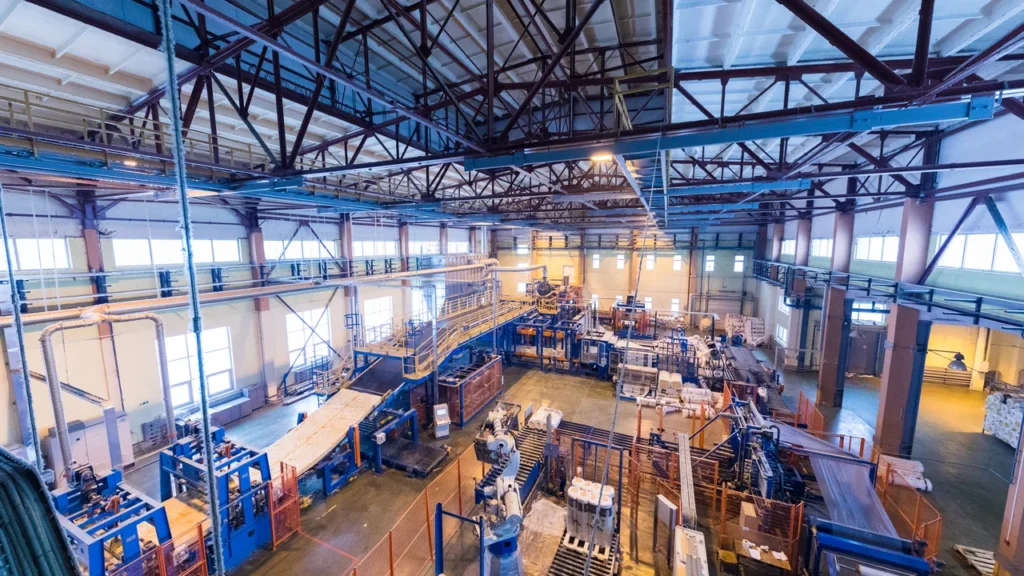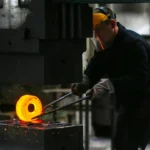As industries evolve toward a greener future, energy efficiency manufacturing has emerged as a central strategy for achieving sustainable production. Modern factories are no longer defined solely by output and capacity—they are evaluated by how effectively they utilize resources, minimize waste, and integrate cleaner technologies. Energy efficiency represents the bridge between economic performance and environmental responsibility.
Understanding Energy Efficiency in Manufacturing
In simple terms, energy efficiency in manufacturing refers to producing more goods using less energy without compromising quality or throughput. It encompasses every stage of production, from raw material handling to final assembly. An efficient facility optimizes energy flows, reduces losses, and adopts technology that transforms kilowatt-hours into tangible productivity.
The Relationship Between Efficiency and Sustainable Production
Sustainable production is the broader philosophy of balancing industrial growth with ecological stewardship. Energy efficiency plays a vital role in this approach by cutting carbon emissions, lowering operational costs, and extending the lifespan of equipment. Frameworks like ISO 50001 and ESG (Environmental, Social, and Governance) reporting require manufacturers to measure and continuously improve their energy performance, aligning environmental goals with business competitiveness.
Major Energy Consumers in Manufacturing Facilities
To improve energy efficiency manufacturing, companies must first identify where energy is consumed most. Typically, the top users are:
- HVAC systems: Heating, ventilation, and air conditioning account for a significant share of industrial electricity use, especially in climate-controlled environments.
- Process heating and cooling: Furnaces, kilns, and chillers are vital to production but often operate at partial efficiency.
- Lighting: Traditional fluorescent systems waste energy and generate excess heat compared to modern LEDs.
- Compressed air systems: Leaks and over-pressurization can waste up to 30 % of input energy.
- Motors and drives: Inefficient motors running continuously add hidden energy costs.
Common Inefficiencies
Energy losses often arise from aging equipment, lack of maintenance, and poor data visibility. Standby power, air leaks, and oversized machinery further erode efficiency. The first step toward sustainable production is recognizing these weak points through audits and monitoring tools.
Strategies to Improve Energy Efficiency

Facility Design and Retrofitting
Designing or upgrading a facility with efficiency in mind delivers long-term gains. Insulated walls, reflective roofing, and natural ventilation reduce thermal loads. Daylighting strategies minimize artificial lighting requirements. A well-planned layout also shortens material transport distances, saving energy on conveyors and forklifts.
Technology Integration
Modern technologies transform conventional factories into intelligent, self-optimizing systems. High-efficiency motors paired with variable-frequency drives (VFDs) automatically adjust to demand, cutting unnecessary energy draw. Smart sensors monitor temperature, pressure, and flow, feeding data to an energy management platform for analysis. According to the U.S. Department of Energy, connected monitoring systems can reduce industrial energy consumption by 10–20 % within the first year of deployment.
Renewable Energy and On-Site Generation
Factories are increasingly adopting renewable sources to complement efficiency upgrades. Rooftop solar panels, biomass boilers, and small-scale wind turbines help offset grid demand. Combined Heat and Power (CHP) systems capture waste heat from production processes and reuse it for facility heating or electricity generation, pushing total efficiency beyond 80 %. Integrating renewables into the energy strategy moves manufacturers closer to net-zero operations.
Digital Transformation and Data Analytics
Digitization is revolutionizing energy efficiency manufacturing. Through advanced analytics, companies gain real-time insight into every energy-consuming asset. Internet-of-Things (IoT) sensors collect data continuously, while artificial intelligence identifies abnormal patterns or potential failures before they occur. These insights allow managers to adjust operations dynamically, minimizing downtime and energy waste.
In smart factories, digital twins simulate energy behavior under different production scenarios. By comparing predicted and actual consumption, engineers can refine scheduling, machine utilization, and maintenance cycles—all contributing to sustainable production and lower overall costs.
Workforce Engagement and Management Practices
Even with advanced technology, people remain the core of energy efficiency manufacturing. Employees who understand the value of conservation can have a significant impact on daily performance. Training programs teach operators to shut down idle machines, maintain correct air pressure, and report energy anomalies. Cross-departmental energy teams encourage collaboration between engineering, maintenance, and production units to align efficiency goals across the organization.
Behavioral initiatives such as energy-saving contests or recognition programs can further boost engagement. When workers see measurable results—lower bills, improved comfort, and recognition for their contributions—they become active participants in sustainable production.
Economic Benefits and ROI
Energy efficiency is not merely an environmental commitment—it is a financial strategy. Reducing electricity and fuel use directly improves profit margins. A 15 % improvement in efficiency can yield thousands of dollars in annual savings for mid-sized plants. Additionally, efficient equipment typically requires less maintenance, resulting in lower downtime and replacement costs.
Return on investment (ROI) for retrofit projects varies by scope but often falls between two and five years. Financing options such as Energy-Service Companies (ESCOs) and green bonds allow manufacturers to implement upgrades with minimal upfront capital, paying back costs through realized savings.
Case Studies: Real-World Applications
Automotive Assembly Plant
An automotive facility in Germany installed an integrated Energy Management System (EMS) that monitored thousands of sensors across its production line. Within one year, total electricity use dropped by 18 %, and CO₂ emissions decreased proportionally. Predictive maintenance further reduced equipment failure rates.
Food Processing Facility
A large food manufacturer retrofitted its refrigeration systems with variable-speed compressors and waste-heat recovery units. The initiative reduced natural-gas consumption by 25 %, demonstrating that energy efficiency manufacturing can thrive even in temperature-sensitive industries.
Electronics Factory
In East Asia, an electronics producer deployed rooftop solar arrays combined with smart meters and AI-driven load balancing. The project achieved full energy self-sufficiency during daytime operations, cutting annual costs by millions of dollars and supporting regional sustainability targets.
Future Trends in Energy Efficiency Manufacturing
The next wave of innovation focuses on deep decarbonization and circular manufacturing. Emerging solutions include hydrogen-powered furnaces, microgrid integration, and AI-based process optimization. Factories of the future will leverage blockchain to verify renewable energy sourcing and enhance supply-chain transparency.
Additionally, the concept of “digital sustainability” links data analytics with environmental metrics, allowing real-time carbon accounting. Manufacturers will increasingly adopt adaptive control systems that automatically adjust parameters to maintain optimal energy efficiency manufacturing performance throughout variable demand cycles.
Building a Culture of Continuous Improvement
Successful organizations treat energy efficiency as an ongoing journey rather than a one-time project. Regular audits, data reviews, and benchmarking ensure progress is maintained. Sharing performance metrics internally promotes accountability, while participation in external sustainability networks provides access to best practices and funding opportunities.
Conclusion
Energy efficiency manufacturing defines the new era of industrial competitiveness. By merging innovation, technology, and human commitment, manufacturers can achieve sustainable production that benefits both business and the planet. From smart sensors and digital twins to employee engagement and renewable integration, every improvement contributes to a cleaner, leaner, and more resilient industrial ecosystem.
As global demand grows and regulations tighten, the ability to produce more with less energy will determine who leads the next industrial revolution. Investing in energy efficiency today is not only a responsible choice—it is a strategic advantage for tomorrow.



